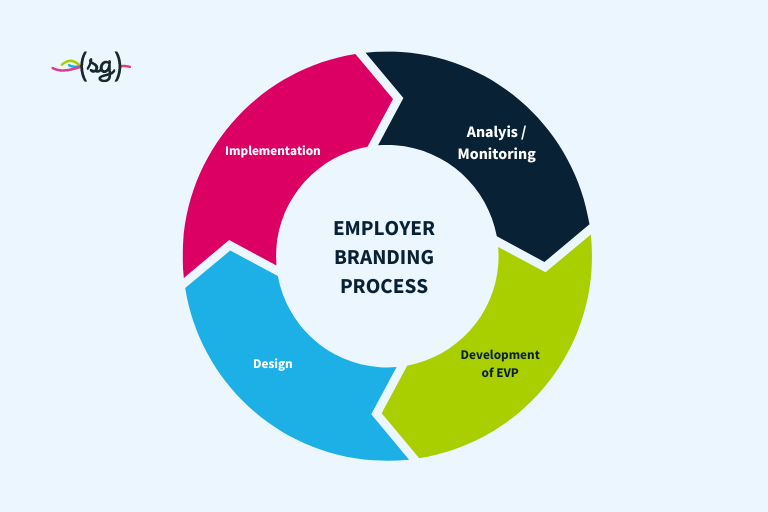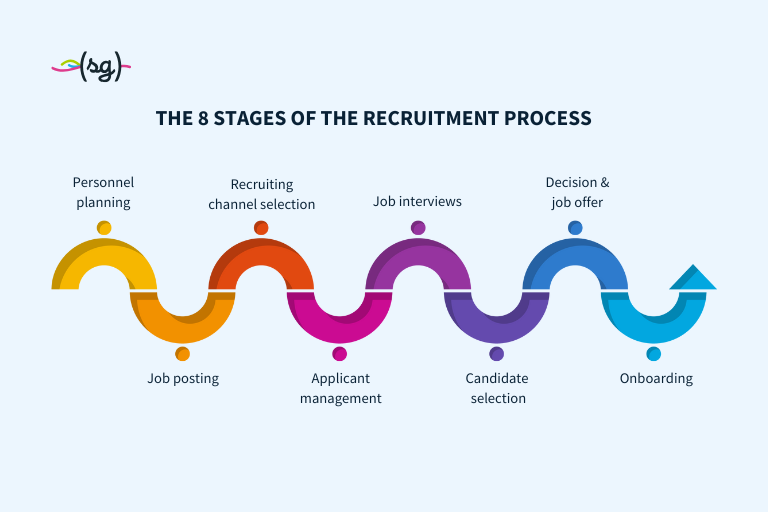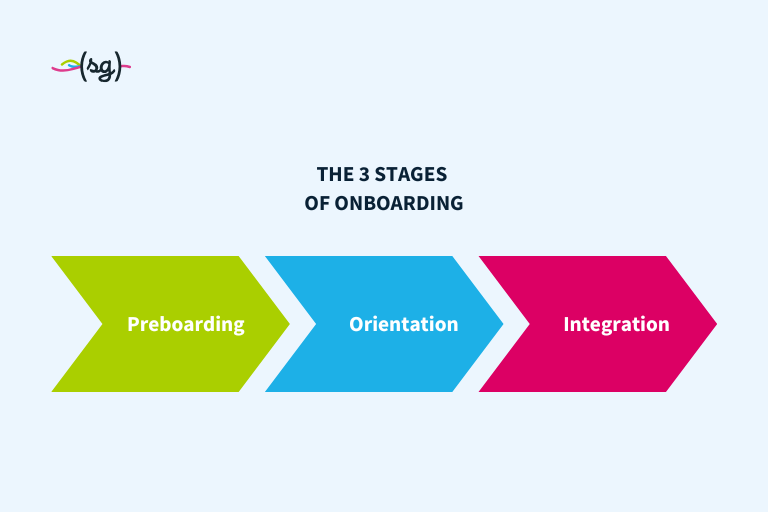Employee development is a classic term from human resources management. It describes the systematic promotion of employees in order to continuously develop their skills and abilities, increase their motivation and optimally prepare them for current and future challenges.
In our fast-paced working world and in view of the war for talent, it is more important than ever for companies to exploit the full potential of their employees.
But what exactly does this mean in practice and what are the benefits for companies and employees?
Contents
Employee development Definition
If we talk about employee development as a definition, it is usually a strategic and future-oriented process that continuously promotes and develops the skills and potential of a company’s employees. Alternatively, the English term “human resource development” is often used.
The aim of employee development is to ensure the long-term competitiveness and success of the company.
In concrete terms, this means that employee development supports each employee individually in order to ensure growth and innovation, guarantee the future viability of the company and strengthen employee loyalty.
Why is employee development so important?
Today’s world of work is constantly changing. Digitalization, globalization and demographic change are constantly presenting companies with new challenges.
In order to meet these challenges, companies need qualified and motivated employees who are willing to continuously develop their skills.
Employee development offers companies numerous benefits:
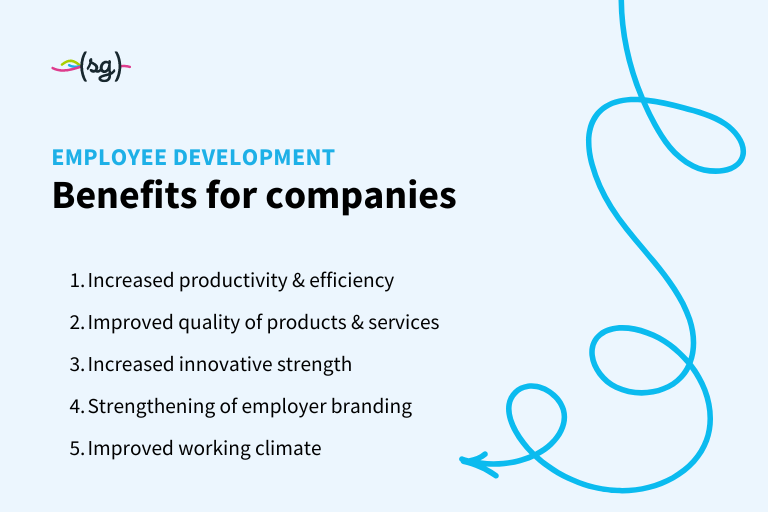
- Increased productivity and efficiency: Well-trained employees work more effectively and efficiently.
- Improved quality of products and services: Competent employees make a significant contribution to quality assurance.
- Increased innovative strength: employees who continue to develop themselves contribute new ideas and impetus.
- Strengthening the employer brand: Attractive development opportunities have a positive effect on employer branding, attract qualified specialists and retain them in the long term.
- Improved working climate: Employee development promotes employee motivation and satisfaction and thus contributes to a positive working atmosphere.
Objectives of employee development
Employee development pursues various objectives from both a company and employee perspective:
Goals from the company’s perspective
- Securing skilled workers: Targeted employee development ensures that the company will continue to have the skilled workers it needs in the future.
- Increasing competitiveness: Continuous further development is essential in order to remain competitive.
- Improving customer loyalty: Satisfied and competent employees make a significant contribution to customer loyalty.
- Securing knowledge management: transferring and securing knowledge within the company.
Goals from the employees’ perspective
- Improved career opportunities through the acquisition of new skills and qualifications.
- Growing skills lead to more self-confidence at work
- Increased motivation and willingness to perform through new challenges and learning opportunities.
- Better job prospects thanks to up-to-date qualifications
Typical tasks of a employee developer
- Analysis of employee development needs: Identification of qualification needs within the company and among individual employees.
- Design of employee development concepts: Creation of strategic and operational employee development plans.
- Planning and implementation of employee development measures: Selection and organization of suitable measures, such as training courses, workshops, coaching or trainee programs.
- Selection and support of trainers and coaches: Careful selection and support of external service providers in the area of employee development.
- Evaluation: Assessment of the effectiveness and efficiency of the employee development measures implemented.
- Budget planning and control: planning and managing the budget for employee development.
Employee development process
The process of employee development can be divided into various phases, which are run through repeatedly in a cycle:
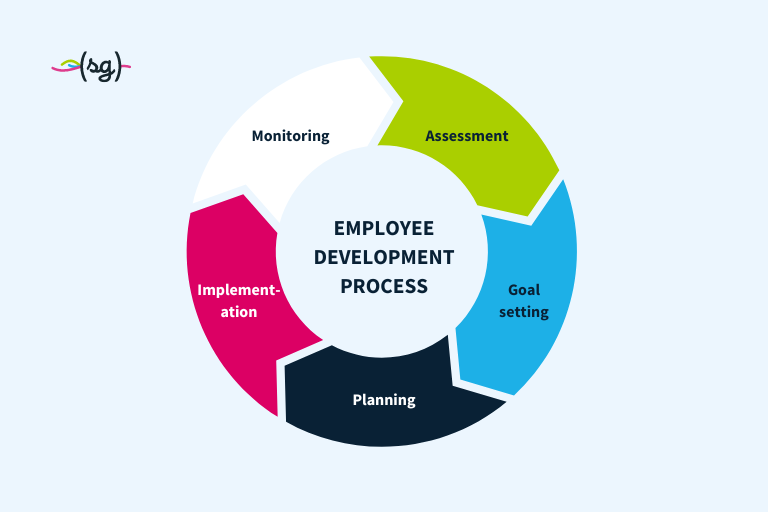
- Needs assessment: Determining the development needs of the company and its employees.
- Goal setting: Definition of concrete and measurable objectives for employee development.
- Action planning: selection of suitable employee development measures
- Implementation: Implementation of the planned measures
- Monitoring: Assessment of the effectiveness and efficiency of the measures
Employee development measures
There are a variety of employee development measures that can be used depending on requirements and objectives. They can be roughly divided into the following categories:
1. vocational preparation measures: “Into the Job”
These measures serve to introduce new employees to the company and their tasks. These include
- Trainee programs
- Internships
- Volunteering
2. measures in the workplace: “On the job”
With these measures, employee development takes place directly at the workplace.
- Job rotation: Employees get to know different areas of responsibility and thus expand their skills and experience.
- Mentoring: experienced employees act as mentors to new colleagues and support them in their professional development.
- Coaching: trained coaches support employees in solving problems and achieving their goals.
- Delegation: by delegating responsibility, employees learn to work more independently and make decisions.
3. extra-occupational measures: “Along the Job”
These measures take place parallel to the actual work activity. These include
- Seminars and workshops
- Conferences and meetings
- E-learning
- Blended learning: Combination of face-to-face events and e-learning.
4. measures close to the workplace: “Near the job”
Although these measures do not take place directly at the workplace, they are closely related to the current activity.
- Quality circles: Employees from different departments work together to improve processes and products.
- Learning islands: special areas in the company that invite learning and the exchange of knowledge.
5. measures away from the workplace: “Off the job”
These measures take place outside the company. These include
- Part-time study
- Dual training in an apprenticeship occupation
- Distance learning courses or online degree programs.
FAQ – Employee development
Employee development encompasses all measures that serve to improve the skills, knowledge and competencies of a company’s employees. This involves both professional and personal development. It is a continuous process that enables employees to perform their tasks better and take on new challenges.
Employee development covers a wide range of measures, such as:
- Training courses and seminars: Teaching specific knowledge and skills
- Coaching and mentoring: individual support for professional development
- Trainee programs: Advanced training for university graduates
- Job rotation: switching between different areas of responsibility
- Further training: studies, correspondence courses or in-service training
There are various methods of employee development that differ in their scope and objectives. The most common methods include:
- On-the-job training: learning in the workplace through practical tasks and projects
- Off-the-job training: training courses and seminars outside the company
- E-learning: online-based learning opportunities
- Blended learning: combination of face-to-face events and e-learning
- Mentoring: support from experienced employees
- Coaching: Individual advice from a coach

